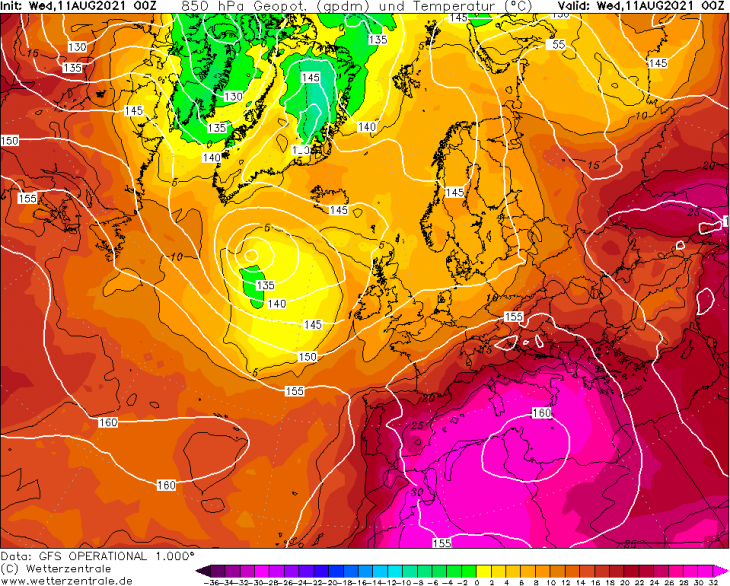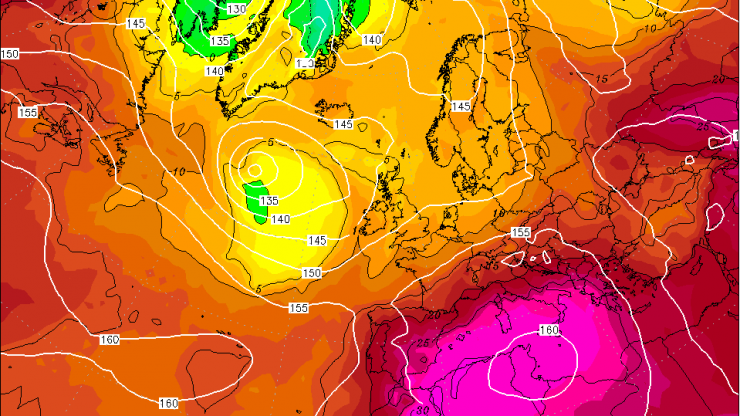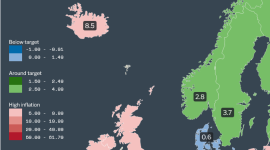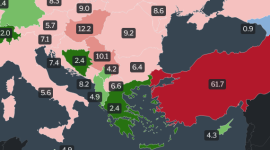On August 11, 2021, at the peak of another heatwave that has struck Europe this summer, Syracuse, an ancient city on Italy’s largest island of Sicily, recorded 48.8 °C (119.8 °F).
If confirmed by the World Meteorological Organization – it will become a new European record for the highest ever recorded temperature. It will beat the previously set record of 48 °C (118.4 °F) set in Athens on July 10, 1977.
Typically, normal high temperatures in the region (around mid-August) are around 29 °C to 32 °C (84.2 °F – 89.6 °F).
UPDATE: As forecasted, a new highest temperature record was set for Spain on August 14, and confirmed on August 16.
Heat dome
The key reason for such high temperatures is a formation of a heat dome. Blocking High pattern (sometimes referred to as the upper-level ridge) can lead to a heat dome formation. It is a term used to describe situations where a large area of high pressure is stationary and concentrated over a large portion of the landmass (continent). As such, it can linger for weeks and brings high temperatures. And, as it seems, this year, it brought a new highest temperature record for Europe.

A hot air mass is trapped under the dome, which is particularly pronounced in areas with the lowest elevations. Thanks to sinking air parcels in the center of the dome, the weather stays dry, stable and even pushes clouds away, thus reducing the chances of rain to a minimum.

What’s next?
At the moment of writing this article, the upper ridge and its heat dome are now moving towards Spain and Portugal. As a result, we may see a new record set for Spain. As a reminder, the highest temperature ever recorded in Spain was of 47.3 °C (117.1 °F), and in Portugal of 47.4 °C (117.3 °F).
UPDATE: As forecasted, a new highest temperature record was set for Spain on August 14, and confirmed on August 16.
We will see what the rest of the weekend brings.
In the meantime, you can check out our post about the highest temperature ever recorded on Earth, as well as the map and lists of the highest temperatures ever recorded in each European country.
ABOUT THE AUTHOR












